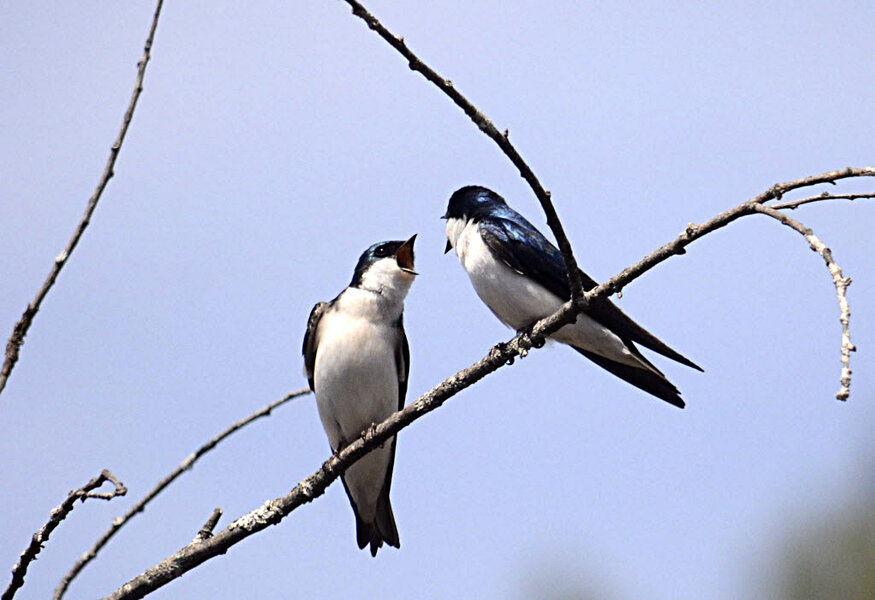Everyday 'electrosmog' scrambles birds' magnetic sense, say scientists
Loading...
Cities can be overwhelming. And our electronic devices don't necessarily simplify urban life.
But apparently, the confusion is even worse if you're a bird. A group of German biologists have published a surprisingly clear finding that normal urban levels of "electrosmog," the collective thrum of waves emitted by electronic devices everywhere, completely scramble European robins' abilities to orient themselves to Earth's magnetic fields.
The scientists at Oldenburg University's Research Center for Neurosensory Sciences say this is the first rigorous study of how existing electrosmog impacts vertebrates.
"What was done before was either with very artificial electromagnetic disturbances that would never occur in nature, or the tests were not double-blind," says Nele Lefeldt, a PhD candidate who co-authored the paper in this week's issue of Nature.
During a season when robins are bursting to migrate, the scientists enclosed a group of them in a wooden hut at their university, whose electrosmog levels they found to be typical of an urban environment. Inside the hut, the birds were held in tunnel-shaped cages whose floors were pitched at a 45 degree angle, and lined with scratch-sensitive paper.
"When a bird is in a migratory mood, he will be so eager to migrate in the direction in which he would normally migrate, that he will hop in that direction in a cage," explains Ms. Lefeldt.
In these slanted, papered cages, the birds' hops were followed by downward slides, likely frustrating the natural migrants, but allowing the scientists to determine their directions clearly from scratch marks. In the wooden hut, through which ambient radio waves beamed freely, the birds' scratchings showed no directional pattern at all, despite the call of the season.
To probe the role of electrosmog in their confusion, the scientists recreated the same setup in electrically grounded huts coated with three millimeters of wave-impervious aluminum. They also observed the birds in un-coated huts in a rural horse barn located 10 km away from Oldenburg's electrosmog.
In both conditions, the birds regained their orientation, hopping and sliding in the direction their free brethren were flying.
Normally, of course, migratory birds touching down in cities are neither screened nor grounded. Yet one rarely sees robins staggering down sidewalks in disoriented stupors. How do birds navigate cities, if human-generated electrosmog totally flummoxes their sense of magnetic orientation?
"The good thing the study points to, is that they have not just their magnetic compass, but they can also orient by means of their star compass, and their sun compass as well," says Lefeldt. "So on days that are not too cloudy, we think that they would recalibrate their systems by the polarized light patterns that occur at sunset." But, she adds, the new finding also suggests that a bird alighting in a cloudy city after dark might find herself bewildered.
Lefeldt says one leading theory about birds' magnetic orientation is that they sense the Earth's field through a light-activated "radical pair mechanism" located in their eyes.
From a human perspective, it's hard to imagine what it would feel like to sense magnetism, or to attempt to go about one's business if that sense went haywire. "It might be like if you have to wear frosted lenses, but that's very speculative," says Lefeldt. "The sense is there, but they cannot use it, because the signals are not heard."
According to the report, multiple ranges of wave frequencies disrupted this sense, including those beaming from radio towers, which are well within the range the World Health Organization recommends as safe.
"They never expected that such low disturbances had any effect at all. The people responsible for those guidelines might start to reconsider their work," says Lefeldt. The finding could also inform policies written to protect the habitats of endangered species.






